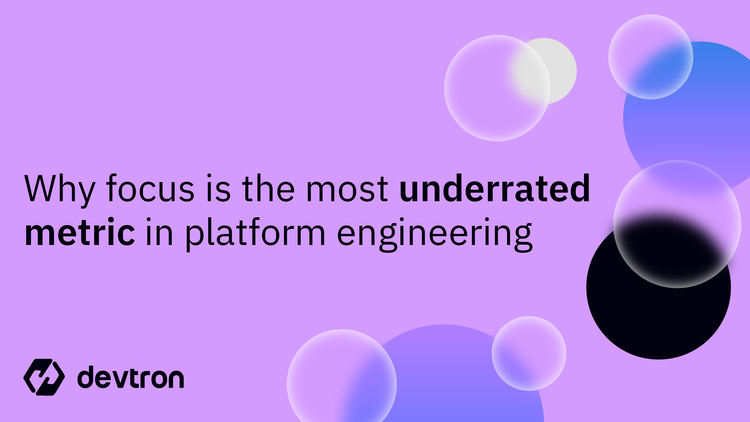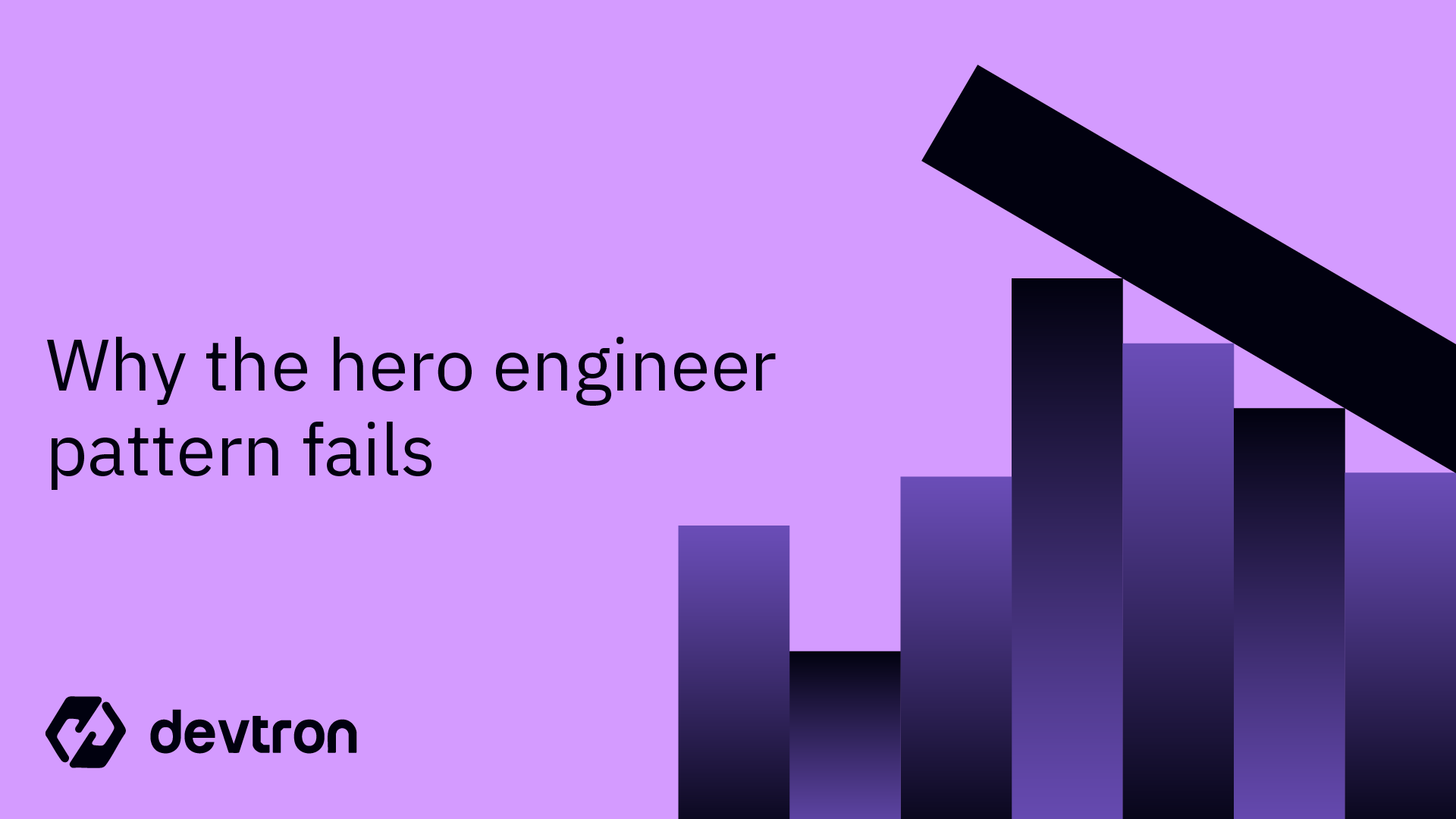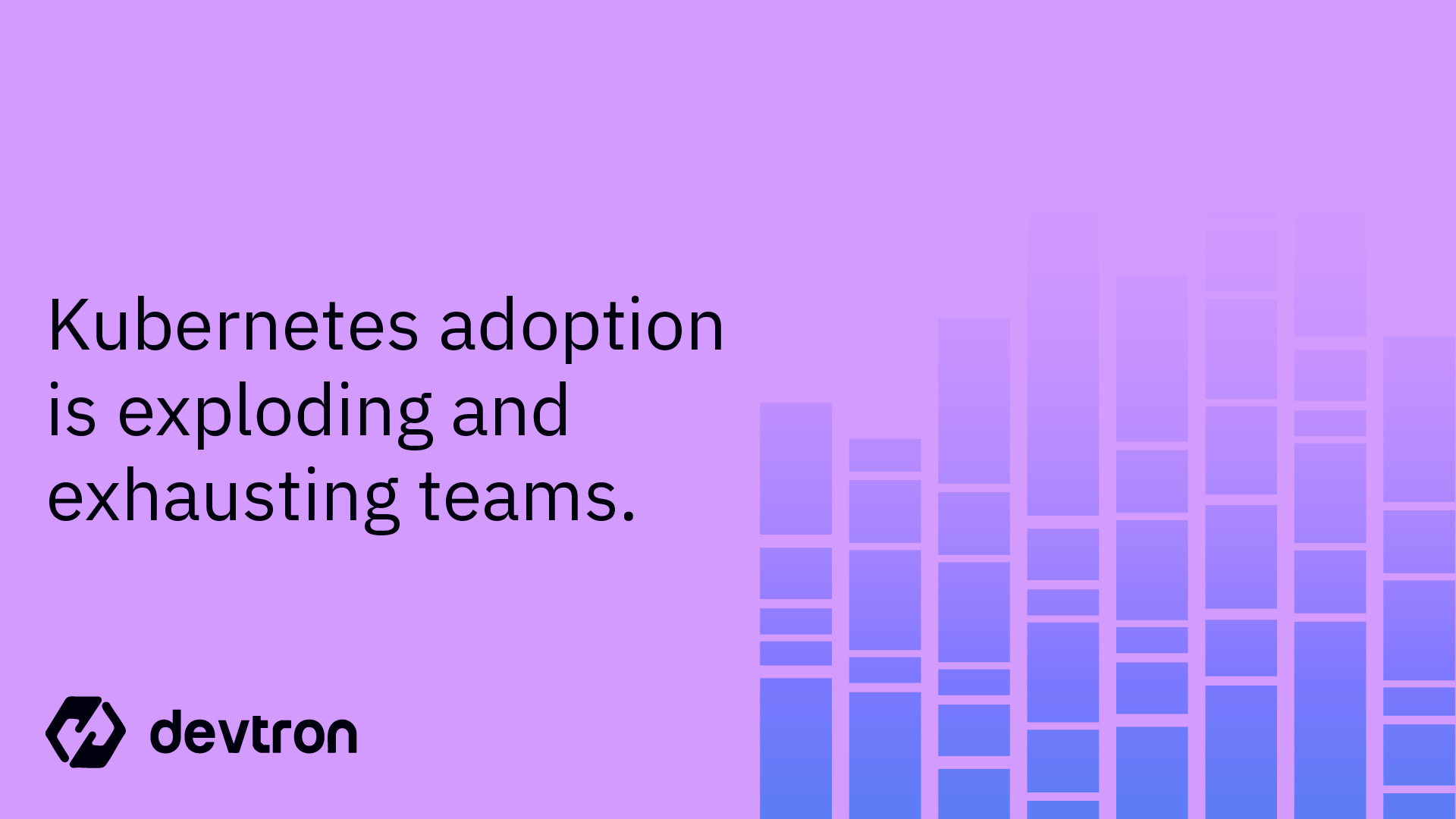Every platform engineering leader I talk to mentions the same paradox: AI is making developers incredibly productive at shipping code, but our systems have never been less stable.
The numbers from DORA's 2025 research tell the story clearly. Ninety percent of technology professionals now use AI at work, with 71% using it to write new code. Organizations are managing 100+ microservices across 10+ clusters, pushing 1000+ daily deployments while juggling 10,000+ alerts. Developers are shipping faster than ever before.
But here's what the velocity metrics don't capture: AI adoption is directly correlated with increased software delivery instability. While AI enables developers to generate and ship code at unprecedented speed, it's creating measurable downstream chaos that platform teams are struggling to contain.
What's Actually Breaking
Last week, I talked to a platform lead at a fintech company. Their deployment volume tripled in six months thanks to AI-assisted development. Sounds great, right? Except their change failure rate has risen to surprising levels, and their engineers are spending more time on unplanned work than on feature development.
This isn't an isolated case. Three specific problems keep surfacing in every conversation:
Deployment failures are becoming the norm. Change failure rates climb as more deployments require immediate rollbacks or hotfixes. Teams get caught in cycles of unplanned rework, forced into constant patch deployments that extend recovery times and erode confidence in release quality. What used to be controlled, predictable releases have become reactive firefighting.
Infrastructure is growing faster than we can standardize it. Clusters and microservices multiply faster than governance can keep up. Configuration drift becomes the norm, not the exception. This isn't just an operational headache; it creates security blind spots that leave organizations exposed. Every unstandardized deployment is a potential attack vector.
The operational systems we built for slower development cycles are buckling. Cloud costs spiral as inefficient auto-scaling, redundant environments, and unchecked tool sprawl push budgets beyond control. Engineers drown in noisy dashboards and alert fatigue while incident response processes buckle under AI-accelerated deployment volume. When everything is urgent, nothing is.
The instinctive response is to add more people to platform teams. But that only scales the problem linearly while the challenge grows exponentially. We need systems that can absorb the growing volume, standardize operations autonomously, and eliminate bottlenecks without human intervention.
Why More Automation Isn't Helping
Most platform tools today are sophisticated automation; they execute predetermined workflows efficiently but lack contextual understanding. They're reactive by design: monitor this metric, trigger that alert, execute this script when conditions are met.
Here's one example from some conversations: A recent deployment caused CPU usage to spike, which triggered auto-scaling, which increased costs, which fired budget alerts, which paged three different teams at 2 AM. The deployment was actually fine; it was processing a legitimate batch job. But five different tools each did exactly what they were programmed to do, creating chaos from a non-issue.
Smarter systems operate fundamentally differently. They understand relationships across domains, correlate information contextually, and take autonomous action based on that understanding.
They connect the dots across tools. Traditional monitoring tracks metrics in isolation. CI/CD handles deployments separately. Cost management operates in its own silo. When issues occur, platform engineers become human correlation engines, jumping between dashboards to piece together what's happening. Intelligent systems recognize that a deployment spike might explain both performance degradation and cost increases, then automatically adjust resources and alerting policies accordingly.
They make decisions, not just execute scripts. Instead of generating alerts for every anomaly, these systems distinguish between routine issues they can resolve independently and genuine problems requiring human expertise. They auto-scale resources, restart failed services, roll back problematic deployments, and apply known fixes, all while maintaining comprehensive audit trails.
They learn from your environment. These systems capture operational expertise and transform institutional knowledge into automated runbooks. When similar patterns emerge, they apply learned solutions instantly rather than waiting for human pattern recognition and intervention.
They get ahead of problems. By analyzing patterns across deployments, infrastructure changes, and system behavior, intelligent systems anticipate problems before they impact users. They proactively scale resources and adjust configurations to maintain stability.
How This Actually Works in Practice
Picture your team's typical Tuesday morning. Three deployment failures, cost alerts firing because someone's test environment auto-scaled to production levels, and a security audit finding configuration drift across 40% of your services.
Now imagine walking into a room and finding that two of those deployments already rolled back automatically with root cause analysis waiting in your inbox, the runaway test environment got shut down at 11 PM, and the configuration drift was corrected overnight with a summary of what changed and why.
Your team handles volume without growing linearly. Instead of requiring more engineers to manage AI-accelerated deployment volumes, smarter systems process thousands of deployment events autonomously, escalating only genuine anomalies that require human judgment. Your team focuses on architecture and strategy rather than operational firefighting.
You get complete context in one place. Rather than context-switching between dozens of disconnected tools, platform engineers work within systems that correlate data across monitoring, deployment, security, and cost domains. Complete operational context eliminates the cognitive overhead of tool sprawl.
Alerts actually mean something. Intelligent systems filter out false positives, correlate related alerts into single incidents, and provide root cause analysis with suggested remediation steps. Platform teams focus on genuine issues rather than chasing phantom problems that waste time and erode trust.
Standards enforce themselves. These systems automatically enforce deployment patterns, security policies, and operational best practices across all services and environments. Configuration drift becomes impossible because standards are enforced continuously, not audited periodically.
Costs optimize themselves. By understanding relationships between application performance, infrastructure utilization, and business requirements, intelligent systems right-size resources automatically, eliminate redundant environments, and optimize spending without manual intervention.
Recovery happens faster. When incidents do occur, intelligent systems provide immediate context about what changed, what's affected, and what remediation options are available. Mean time to resolution drops dramatically because the detective work is already done.
Building Systems That Actually Understand Kubernetes
At Devtron, we're building an industry-first platform that truly understands the full reality of your Kubernetes environments and can operate them autonomously, freeing your teams to focus on innovation rather than firefighting.
Our platform continuously correlates application events, infrastructure performance, and cost changes in real time. Configuration drift across clusters gets corrected instantly, not discovered weeks later in an audit. When performance degrades, you get immediate answers that span both code and infrastructure, because in Kubernetes, it's almost always both.
At the heart of this is what we call the Agent SRE, think of it as an experienced SRE who never sleeps, never forgets, and deeply understands your environment. It knows how your services behave, what your resource patterns look like, and how deployments typically impact performance. With that context, it acts automatically:
- Pod running out of memory? It restarts and rightsizes based on actual usage patterns.
- Deployment causing errors? It rolls back to the last known good version and provides analysis.
- Cost spike from forgotten test resources? It shuts them down before the bill arrives.
- Security policy violation? It remediates and updates standards across similar services.
But operating at the speed of AI-driven development requires more than just stability. Developers still need to move as fast as code gets generated, with golden paths and built-in guardrails. Pre-built application templates standardize best practices. Robust CI/CD pipelines embed security and compliance policies. Automated quality gates catch issues before they reach production.
The result is a platform that not only makes Kubernetes manageable but also matches the velocity of modern AI-accelerated software delivery. Your developers ship fast, your systems stay stable, and your platform team gets to solve interesting problems instead of fighting fires all day.
That's the kind of foundation enterprises need for both reliability and rapid innovation in an AI-first world.






